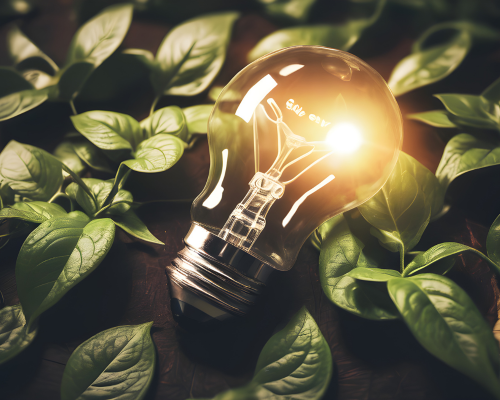At a time when energy costs and environmental commitments are setting the agenda for businesses and governments, energy efficiency in the professional environment has become a priority .
Optimizing consumption is no longer just a matter of savings, but also of competitiveness, sustainability, and regulatory compliance . From offices and logistics centers to sports facilities and public buildings, improving efficiency means using less energy to achieve the same (or better) performance .
Below, we review five practical strategies you can implement today to reduce consumption and improve energy efficiency in your professional environment , followed by a sixth “+1” tool that allows you to intelligently measure, analyze, and maintain these results .
5 Strategies to improve energy efficiency in the professional environment
These consumption habits are the starting point for any energy efficiency strategy, with visible results in the short term:
1. Control your air conditioning: every degree counts
In most buildings, air conditioning accounts for between 40% and 60% of total energy consumption .
Correctly adjusting the temperature is one of the simplest and most effective measures:
- Winter: keep between 19°C and 21°C.
- Summer: between 24 °C and 26 °C.
Each degree outside these ranges can mean a 7% to 10% increase in energy costs . Installing smart thermostats or centralized management systems allows you to maintain comfort without wasting energy.
2. Check the insulation and avoid thermal leaks
Heating or cooling is of little use if the energy escapes through windows or roofs.
Good thermal insulation is the most profitable investment in the medium term , especially in public or old buildings.
Check window sealing, replace outdated woodwork, and consider materials with low thermal transmittance .
In addition, incorporating automatic doors, air curtains or double glazing can reduce annual energy consumption by up to 25% .
3. Optimize lighting with LED technology
Lighting represents another major source of expenditure. Replacing traditional lighting fixtures with LED technology can reduce consumption by up to 80% while improving light quality.
Complement the change with presence sensors, automatic intensity regulators and timers .
For example, in administrative buildings or sports facilities, the use of
smart lighting systems
allows lighting to be adapted to the actual use of the space, avoiding energy waste when the areas are empty.
4. Manage standby devices and equipment
So-called “phantom consumption” (generated by equipment in standby mode) can represent between 5% and 10% of a facility’s total electricity expenditure .
Implement automatic shutdown protocols , use smart power strips , and schedule remote shutdowns for non-essential equipment outside of business hours.
In highly technological professional environments, these measures can translate into savings of thousands of euros per year and a significant reduction in emissions.
5. Schedule energy use according to hourly rates
Taking advantage of off-peak hours (when the price per kWh is lower) allows you to optimize costs without affecting operations.
Scheduling air conditioning, pumping, and heavy machinery systems to operate during these time periods generates significant savings, especially in industrial or logistics environments.
The use of energy management systems (BEMS) facilitates this control and automates processes, ensuring efficient operation 24 hours a day.
+1. IoT Monitoring: The Strategy That Makes the Difference
Implementing savings measures is important, but without data, there is no control .
True efficiency begins when you can measure and understand the energy performance of your facility in real time .
IoT monitoring offers this capability: smart sensors, meters, and platforms that record electricity, water, or gas consumption in each area or device.
At
OdinS
, we make this possible with WiCloudS , an interoperable platform that centralizes all data in a single environment, transforming it into useful information for decision-making. This information can also be integrated into third-party visualization systems, unifying the information in a single place.
In public buildings, sports centers, or municipal infrastructure, IoT monitoring enables real and sustainable control of energy expenditure, complying with the efficiency and sustainability standards required by the EU and programs such as the
National Integrated Energy and Climate Plan (PNIEC)
.
From one-off savings to smart control
Energy efficiency is not just about good practices: it requires visibility, automation and continuous analysis .
The five strategies above are the foundation, but IoT monitoring is the key to ensuring long-term success.
Transforming a building or facility into an energy-smart space is no longer a utopia: it’s a measurable, sustainable, and necessary investment.
Discover how OdinS IoT monitoring can help you reduce costs, optimize resources, and move toward a sustainable energy model. Contact us today!




